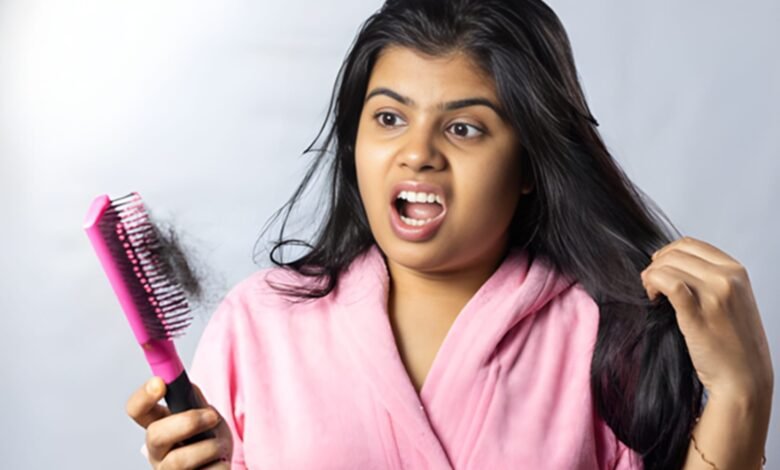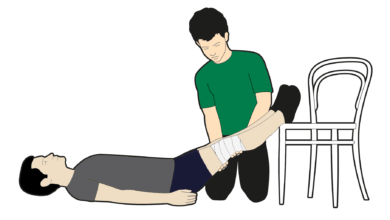The Relaxer Fallout: Why Chemical Straightening Causes Hair Loss in Straight Hair

Chemical relaxers have long promised silky, manageable tresses for women with coarser or textured strands, offering the illusion of effortless beauty. Yet beneath the shine lies a silent struggle — thinning, breakage, and long-term scalp damage. For many women, especially those with naturally curly or coily textures, the price of sleekness has been a gradual loss of hair density and confidence. This article dives deep into the science and reality of relaxer-induced hair loss, explores the physical effects of harsh straightening chemicals, and highlights safer, modern alternatives that let you embrace straight styles without sacrificing your mane’s health.
Understanding the Hidden Damage Behind Chemical Relaxers and Relaxed Straight Extensions
Textured hair is naturally more delicate than it appears. Its twists, coils, and bends create weak points along the shaft, making it more vulnerable to dryness, frizz, and breakage when exposed to harsh treatments. Many women who love the sleek look of straight hair often turn to chemical relaxers or styling alternatives such as Relaxed Straight Hair Extensions to achieve smoother results without constant heat. While the extensions provide a chemical-free way to enjoy straight styles, traditional relaxers take a more aggressive approach — one that often comes at the cost of scalp and strand health.
When a relaxer is applied, it works by breaking down the protein bonds (disulfidebonds) that give textured strands their curl pattern. While this process results in smoother tresses, it also strips the hair of essential keratin, leaving it weaker, thinner, and prone to snapping.
Over time, the combination of high-pH chemicals and repeated treatments leads to scalp inflammation, hair shaft thinning, and even follicle miniaturization, the same condition associated with permanent hair loss. That’s why many dermatologists and trichologists warn that frequent relaxer use can permanently alter the growth cycle of your mane.
Today, many women are reclaiming their hair health by transitioning away from chemical straightening. Instead, they are embracing protective, low-manipulation styling alternatives that allow their natural texture to thrive while keeping styling versatility intact.
How Relaxers Damage Hair Follicles and Why Straight Lace Front Wig Styles Offer Relief
When you apply a relaxer, the scalp is often exposed to sodium hydroxide or calcium hydroxide, both highly alkaline substances. These compounds alter the pH balance of your skin and follicles, causing burns, irritation, and sometimes irreversible scarring. Even mild formulations can cause cumulative damage when applied repeatedly over months or years. This process, known as follicular atrophy, gradually weakens the base of each strand until it can no longer support healthy regrowth.
Beyond surface-level damage, relaxers can also penetrate deep into the follicular tissue, disrupting natural oil production and blood circulation. Once the follicle is compromised, regrowth becomes patchy and uneven — one of the key signs of chemical alopecia. Some women may experience scabbing or tender patches on their scalp long before noticeable shedding begins, making early detection and care crucial.
For those seeking a sleek appearance while giving their scalp a break, textured-hair-friendly solutions like a Relaxed Straight Lace Front Wig have become increasingly popular. Unlike chemical straightening, these wigs mimic the smoothness of relaxed tresses while offering full scalp protection. They are breathable, versatile, and ideal for women experiencing thinning edges or overall hair loss. By using wigs as a temporary styling alternative, many find they can maintain a chic, polished look without further damaging their scalp or follicles.
Is Relaxer-Induced Thinning Reversible? Steps Toward Recovery
The good news? In many cases, relaxer-related hair loss can be reversed if the follicles haven’t been permanently scarred. However, recovery requires patience, consistency, and a commitment to nourishing your mane from root to tip. Here are some steps to encourage regrowth:
- Detox Your Scalp: Use clarifying shampoos or herbal rinses to remove chemical buildup and restore natural pH.
- Moisturize Regularly: Deep-condition weekly with products rich in shea butter, aloe vera, and protein to strengthen the shaft.
- Massage for Circulation: Stimulate the scalp using essential oils like rosemary or peppermint to boost blood flow.
- Trim Damaged Ends: Get rid of split or frayed tips to encourage even growth.
- Protective Styling: Alternate between wigs, extensions, and loose styles that minimize tension.
Consistency is key. Remember, it can take several months for new, stronger strands to emerge. If shedding persists, consult a trichologist or dermatologist who can assess the extent of follicular damage and recommend treatments such as low-level laser therapy or platelet-rich plasma (PRP) injections.
Safer Alternatives for Straight Styles Without Chemicals
Modern beauty innovations mean you can enjoy straight, smooth looks without subjecting your hair to harsh relaxers. Consider these safe styling options:
- Heat-Free Straightening Tools: Stretch your curls using silk wraps or tension blowouts without permanent alteration.
- Keratin and Amino Acid Treatments: These offer temporary smoothing effects without breaking down bonds like traditional relaxers.
- Protective Extensions and Wigs: These create style versatility while safeguarding your natural texture.
- Silk Presses: A controlled heat technique that straightens curls temporarily without the use of chemicals.
These alternatives not only reduce chemical exposure but also allow your hair to thrive underneath. With consistent care and balanced styling habits, your mane can regain fullness and elasticity over time.
FAQs on Hair Loss and Relaxer Recovery
1. Why does my hair fall out after a relaxer treatment?
Because relaxers break the hair’s internal bonds, overprocessing leads to brittle strands that snap easily. The chemicals can also inflame or burn the scalp, damaging follicles and causing excessive shedding.
2. How do chemical relaxers damage hair follicles?
They alter the natural pH and protein structure within the follicle, causing inflammation and atrophy. With continued use, the follicle weakens, leading to thinning or permanent hair loss.
3. What are safer alternatives for straight looks without chemical relaxers?
Heat-free styling, silk presses, amino acid treatments, and protective options like extensions and wigs offer safer routes to achieve sleek styles without damaging your scalp.
See also: Nano Banana Image Generator: A Creative Leap in AI-Powered Visuals
4. Is it possible to reverse relaxer-induced thinning?
Yes, if the follicles are not scarred. Through consistent scalp care, deep conditioning, and protective styling, many women experience regrowth within months. Severe cases, however, may require medical intervention.
Final Thoughts:
The legacy of relaxers on textured hair is both cultural and complex. For decades, women were taught that beauty meant straightness — even at the cost of health. Today, the narrative is shifting. Understanding the risks behind chemical straightening empowers you to make informed choices that prioritize your mane’s strength and longevity. Whether you choose to transition naturally or explore alternatives like relaxed straight hair extensions and relaxed straight lace front wig, remember — your hair’s health is the real foundation of beauty.



